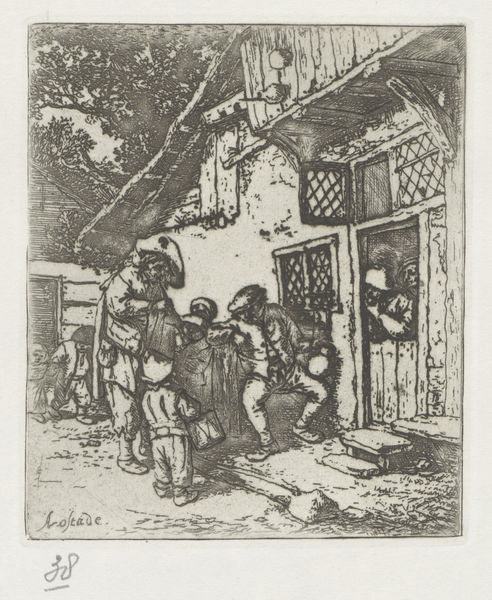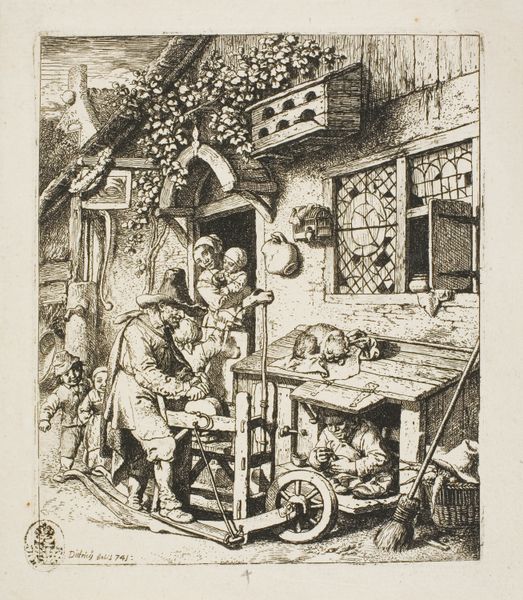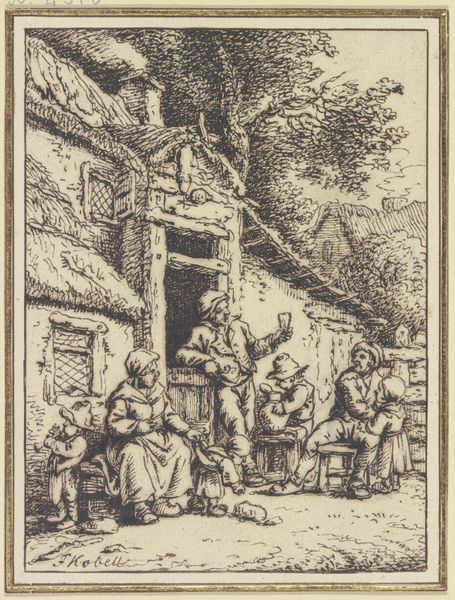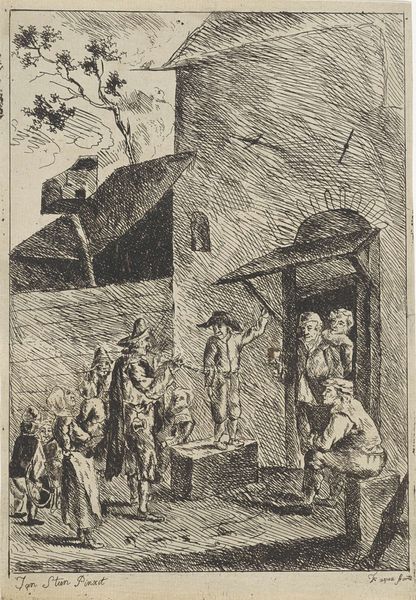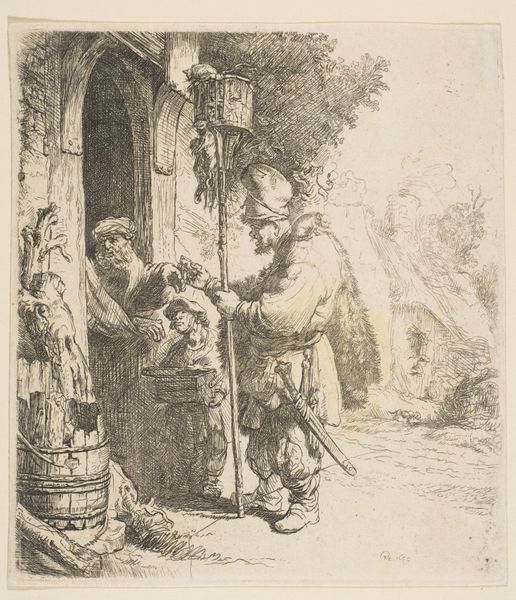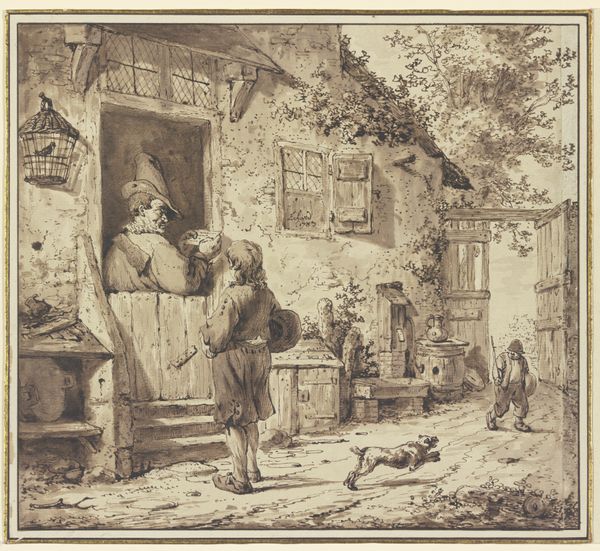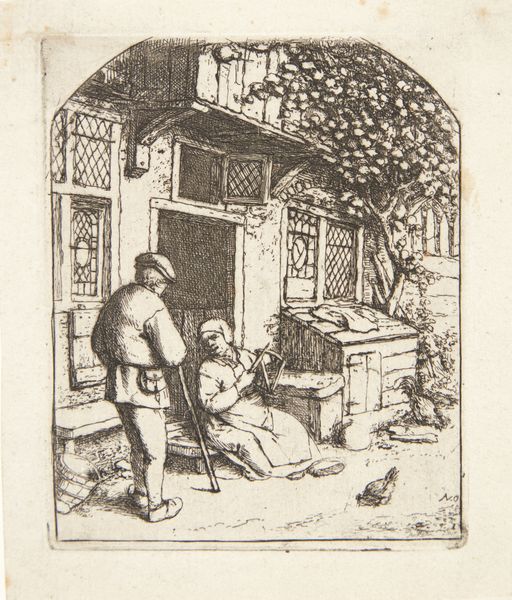
drawing, print, etching, paper
#
pencil drawn
#
drawing
#
toned paper
#
light pencil work
# print
#
etching
#
pencil sketch
#
charcoal drawing
#
paper
#
charcoal art
#
pencil drawing
#
pen-ink sketch
#
pencil art
#
watercolor
Dimensions: 165 × 143 mm (image); 169 × 149 mm (sheet)
Copyright: Public Domain
Editor: Cornelis Dusart’s etching "The Dancing Dog" from 1685… it’s incredibly detailed, almost chaotic. The figures are all crammed together in what looks like a very poor neighborhood, and there's definitely a dancing dog! What stands out to you when you look at this piece? Curator: The beauty of this etching, beyond its narrative, lies in understanding its means of production. Dusart was working within a specific printmaking tradition, using materials readily available. Notice the rough quality of the paper and the relatively crude etching lines. This isn't about illusionistic perfection; it's about the transfer of an image through labor, disseminating it to a wider audience who likely shared similar socio-economic conditions with those depicted. Editor: So, you're saying the value isn't just in the image, but in the fact that it could be reproduced and shared? Curator: Precisely. Consider who could afford paintings in 1685 versus who might acquire a print like this. It speaks volumes about the accessibility of art and the evolving market for imagery. Even the subject matter—everyday life, street performers—reflects a different consumer base than the aristocratic patrons of grand history paintings. What about the materials do you see speaking to his background? Editor: Well, the simplicity of the etching, just lines on paper, compared to, say, oil paint, seems directly related to the lower cost and simpler technique needed. It's more democratized, maybe? Curator: Exactly. It democratizes not only viewing but also, to some extent, the creation of art. Think of the workshops, the apprentices involved in the printmaking process. "High art" it wasn’t, but impactful, nonetheless. Editor: It definitely gives me a different appreciation for prints. I was so focused on the imagery of the dog, but it is cool that prints can also show the economic reality of art creation in that era. Curator: Absolutely! And recognizing that connection enriches our understanding of both the image and its place in history.
Comments
No comments
Be the first to comment and join the conversation on the ultimate creative platform.
